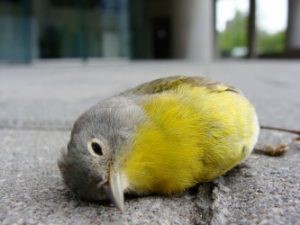Campaign to Reduce Light Pollution
The more we learn, the more we are reminded of the interconnectedness of all life on this planet. Yet, as we keep discovering, this message has not been clearly or consistently delivered or received by – many of us.
Among the many things we hope to do through the Operation Pollination initiative is to help bring that education to light. There are so many directions to take that pun but one must choose …
Back in July when we recognized Moth Week, the dark-sky movement came up in conversations. This is a campaign to reduce light pollution. Artificial lighting affects species migration patterns, predator-prey relationships, and the circadian rhythms of many organisms -- including ours.

Birds that migrate at night, including most songbirds, are often drawn toward illuminated buildings, throwing them off course. Tragically, this often leads to collisions, many fatal. Although it is not known precisely what proportion can be attributed to artificial lights, hundreds of millions of birds perish in building collisions every year in the US. Other birds succumb to wasting energy and exhaustion after becoming entrapped by lights.
Outside of the fatal risks of collision and exhaustion, city lights can threaten birds by drawing them into areas where there is less suitable habitat as well as other risks such as free-roaming domestic and feral cats. Seabirds can become so disordered by artificial lights that they become temporarily grounded, where they are vulnerable to predation, poaching, vehicular collisions, and other threats. Night lighting is a particular threat to birds that frequently vocalize during flight, such as warblers, thrushes, and sparrows; their calls lure other members of their species into danger.
The fact that artificial lights can disorient birds has been known for over a century (one study published in 1918, for example, examined bird collisions and exhaustion at lighthouses), but it assumes a much greater urgency in today’s world, in which outdoor illumination is increasing by over 2 percent each year and bird populations are plummeting.
While the Lights Out campaign is an important part of the solution, the dangers of light pollution to birds don’t end with migration. Artificial night lighting is becoming increasingly recognized as a threat to biological organisms and even entire ecosystems, with serious consequences for both resident and migrant birds throughout the year.
In addition to its direct effects on birds, artificial light is affecting other animals and plants on which birds depend. As one notable example, light pollution has been implicated as a major driver of today’s “insect apocalypse”, with insectivorous birds already facing severe declines. Outdoor night lighting also reduces the activities of nocturnal pollinators, with damaging consequences for plant communities and the birds that depend on them.
A night sky without artificial light is therefore vital to the proper functioning of natural ecosystems which brings us full circle to the mission of OP.
An IDA International Dark Sky Community is a town, city, municipality or other legally organized community that has shown exceptional dedication to the preservation of the night sky through the implementation and enforcement of a quality outdoor lighting ordinance, dark sky education and citizen support of dark skies.
To learn more about this initiative go to: https://www.darkskysociety.org
ALSO, mark your calendar! At the next Zoom OP meeting at 9:00 a.m. on Monday November 15, our guest speaker, Molly Toth (who attended the conference introducing the Dark Skies Ordinance to our neighbors in Pittsburgh), will help us to hone our collective efforts to aid in this initiative.